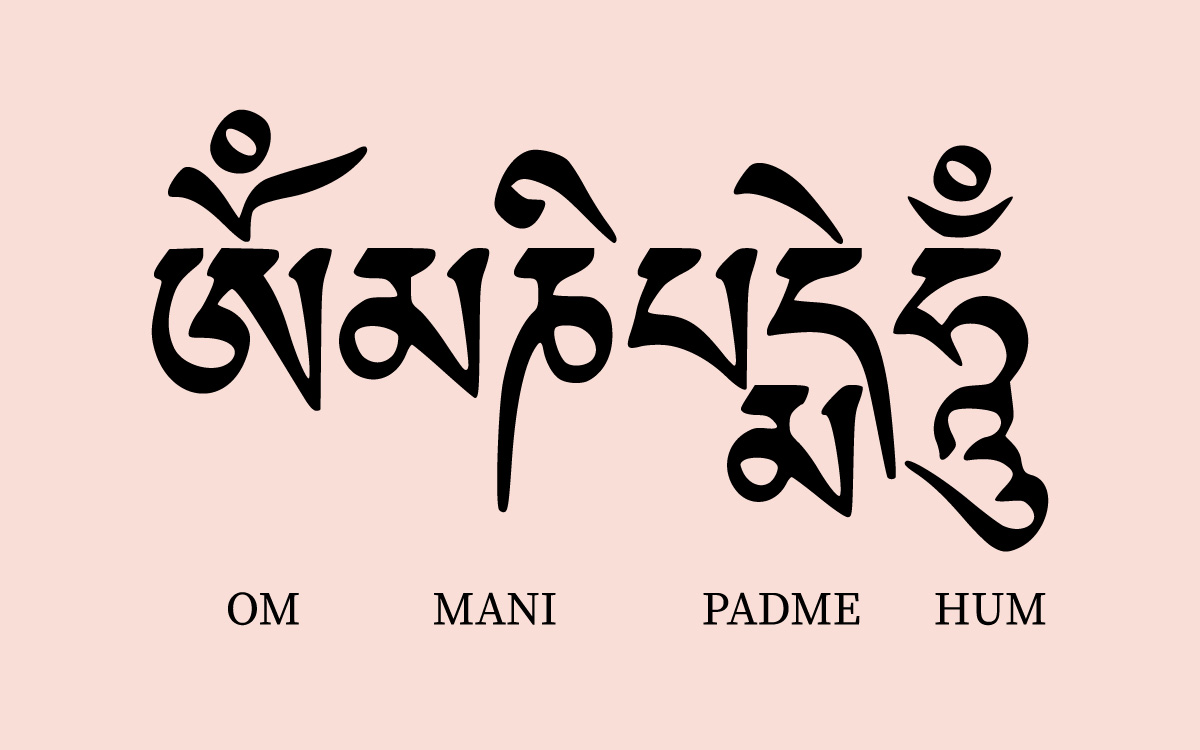If you’ve ever visited a Buddhist monastery or stupa, you may have encountered the captivating sound of the mantra “Om Mani Padme Hum.” This six-syllable Sanskrit mantra, believed to encapsulate the teachings of Buddha, holds immense importance in Buddhist traditions.
Carved on rocks, inscribed on prayer wheels, and recited by devotees, this mantra has a deep spiritual significance. In this article, we will delve into the meaning and interpretations of this ancient mantra, which has captivated spiritual seekers for centuries.
Origins and Cultural Significance
The roots of the “Om Mani Padme Hum” mantra can be traced back to Nepal, the birthplace of Buddhism. Derived from Sanskrit, this sacred mantra is now widely practiced in Tibetan Buddhism, especially in the Himalayan region. Often found adorning prayer wheels and written on paper scrolls within these wheels, the mantra’s rhythmic chanting or spinning is believed to generate spiritual blessings.
Literal Translation and Interpretations
While the mantra is considered to contain profound teachings that transcend simple translation, a literal breakdown of its syllables reveals the phrase “Praise to the Jewel in the Lotus.”
This translation captures the essence of the mantra’s symbolism. However, it is crucial to explore the deeper interpretations associated with each syllable, which purify specific negative qualities.
- Om: Represents the purification of bliss and pride, associated with the realm of gods.
- Ma: Symbolizes the purification of jealousy and the need for entertainment, found in the realm of the jealous gods.
- Ni: Purifies passion and desire, commonly experienced in the human realm.
- Pad: Signifies the purification of ignorance and prejudice, characteristics of the animal realm.
- Me: Represents the purification of greed and possessiveness, qualities found in the realm of hungry ghosts.
- Hum: Symbolizes the purification of aggression and hatred, which are attributes of the hell realm.
Spiritual Significance
Beyond its literal and interpretive meanings, the “Om Mani Padme Hum” mantra serves as a powerful tool for spiritual transformation. Chanting or reciting the mantra is believed to evoke compassion and invoke the qualities of enlightenment. It is considered an expression of the desire to attain liberation from suffering and cultivate inner peace.
Presence in Buddhist Monasteries and Stupas
Buddhist monasteries and stupas provide a serene setting where the “Om Mani Padme Hum” mantra is chanted or displayed. The rhythmic vibrations of the mantra are believed to permeate the surroundings, creating an atmosphere conducive to meditation and spiritual practice.
The mantra’s presence, be it carved on rocks, written on prayer wheels, or recited by practitioners, serves as a constant reminder of the path to enlightenment.
Conclusion
The “Om Mani Padme Hum” mantra holds deep spiritual significance in Buddhist traditions, transcending its literal translation. As a mantra that encompasses the teachings of Buddha, it serves as a powerful tool for purifying negative qualities and invoking compassion.
Whether encountered in a Buddhist monastery or etched onto rocks in the Himalayan region, this mantra carries a profound message of liberation and inner peace. Embracing its wisdom and vibrations, spiritual seekers can embark on a transformative journey towards enlightenment.





